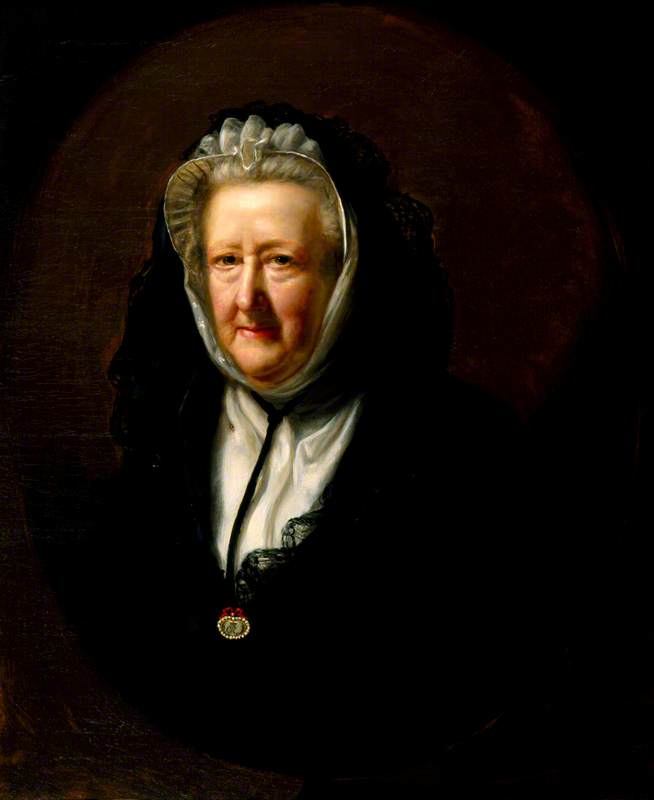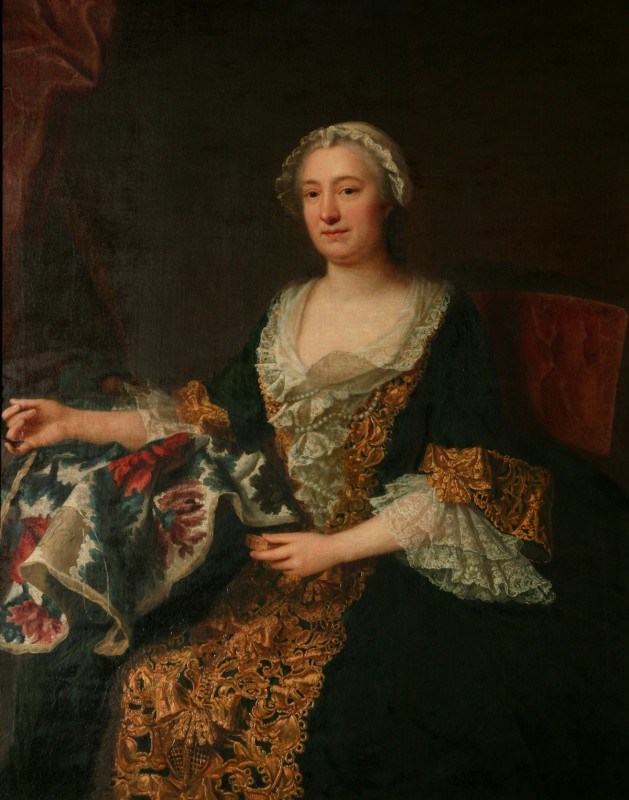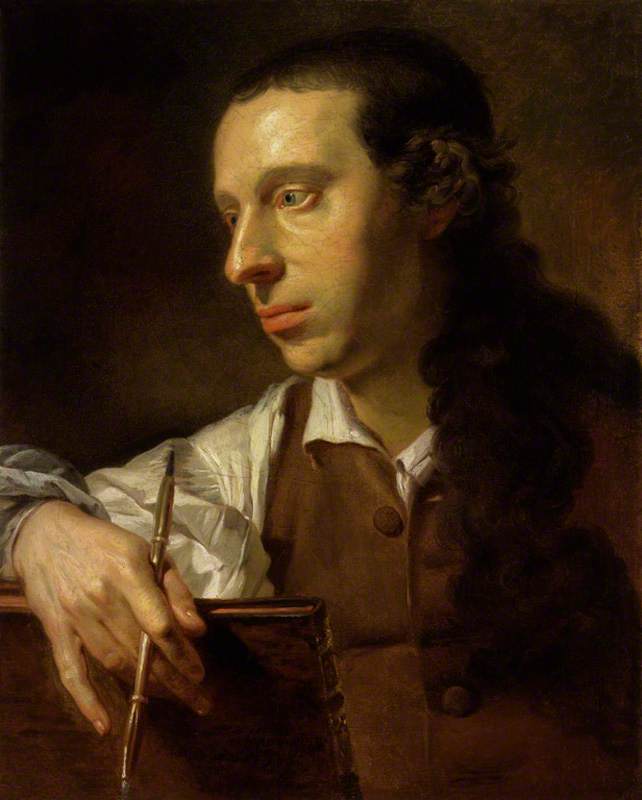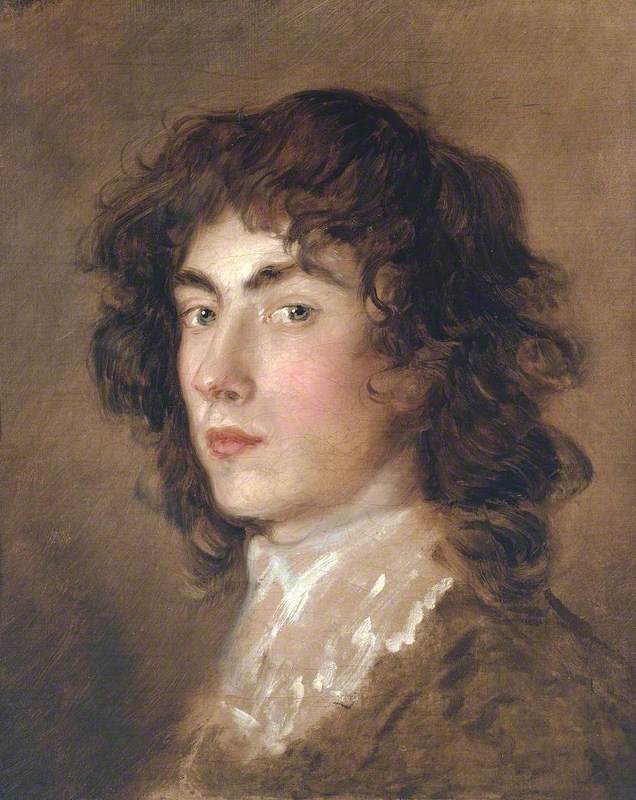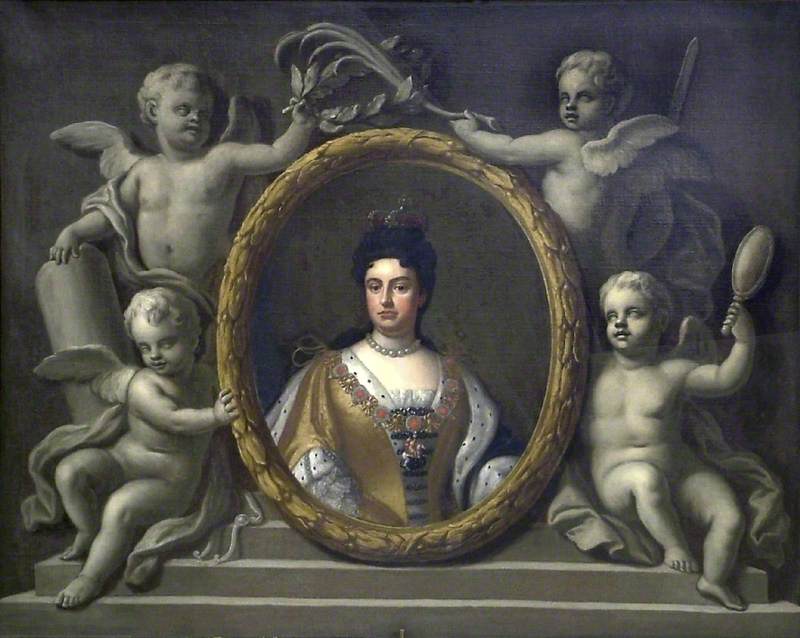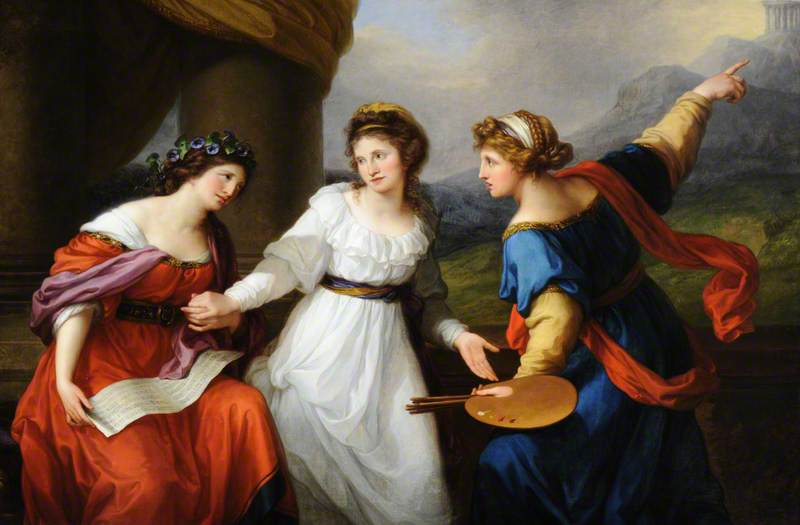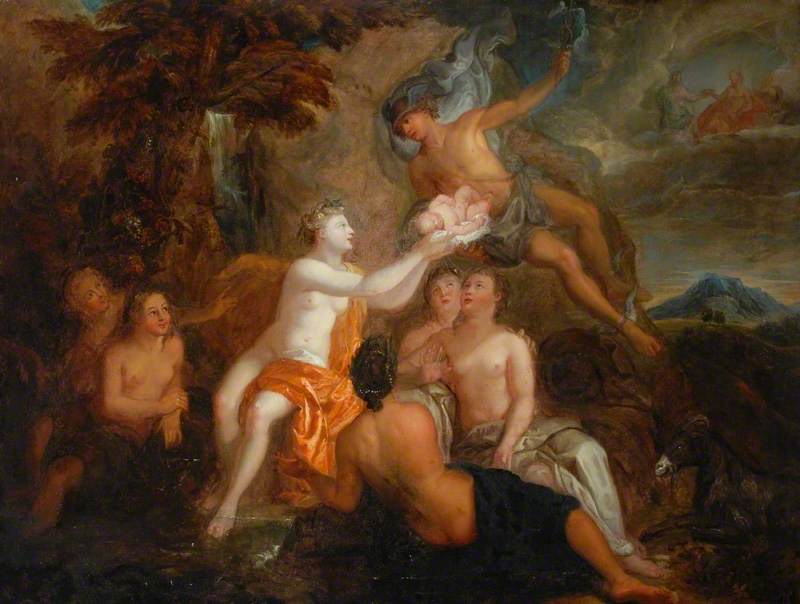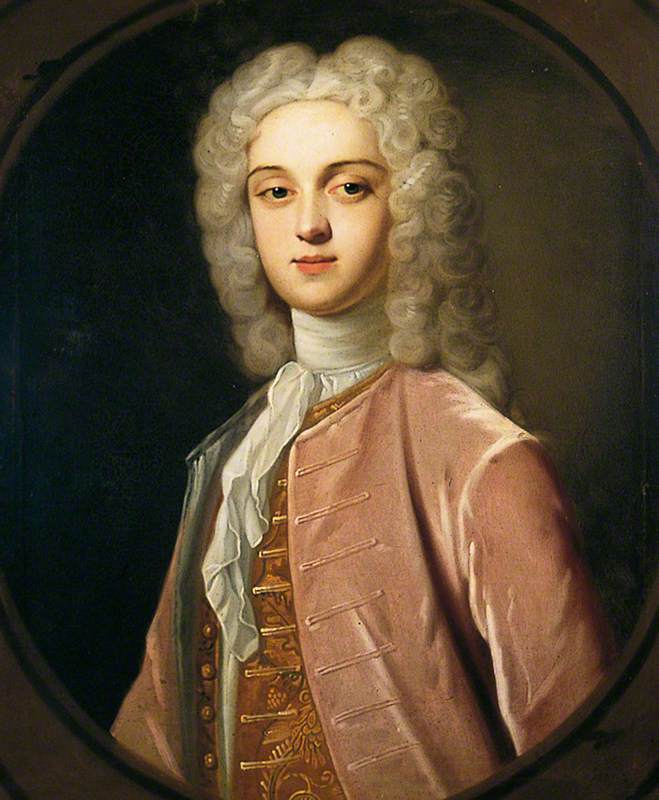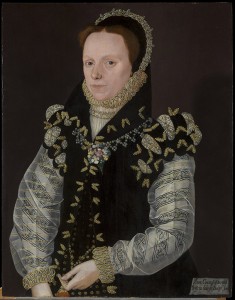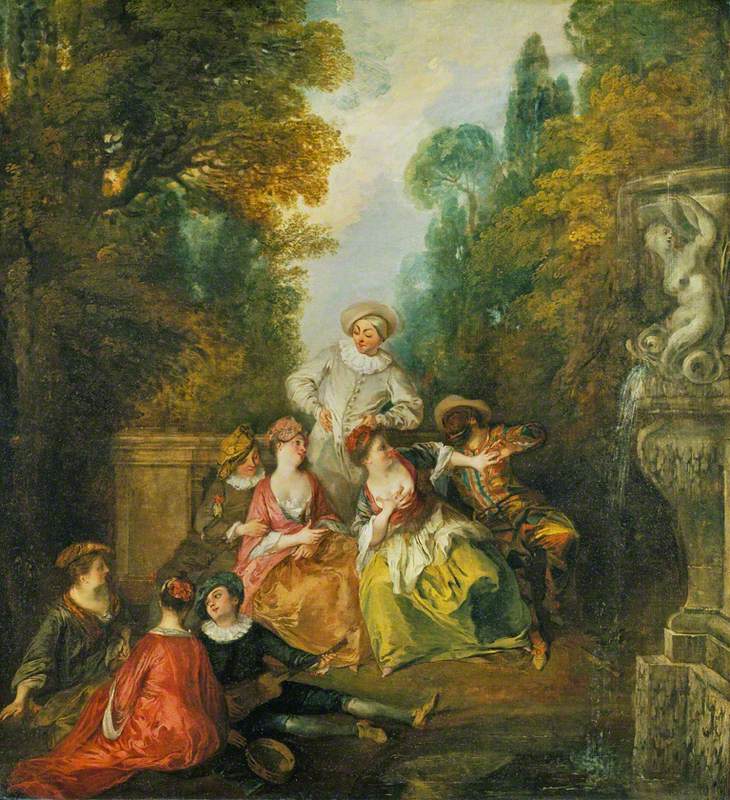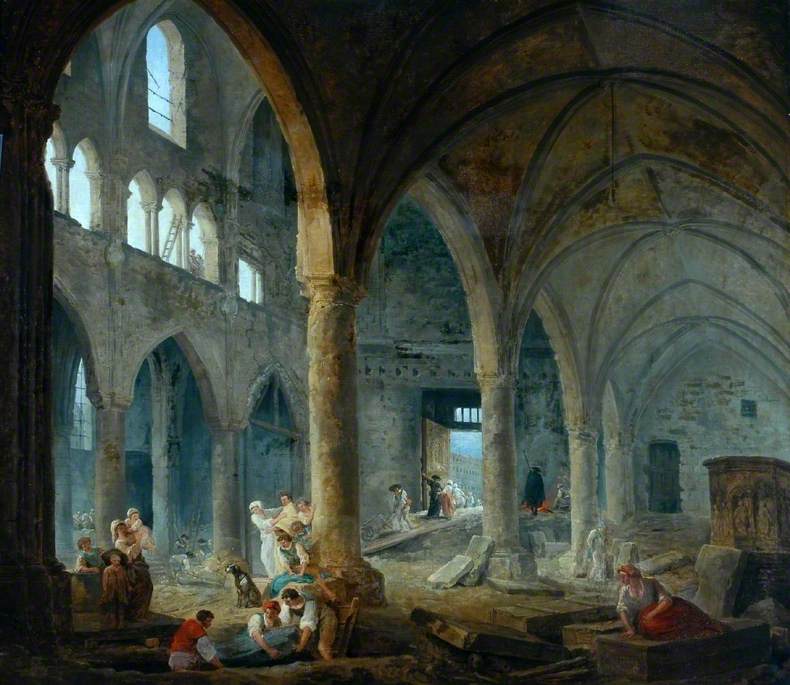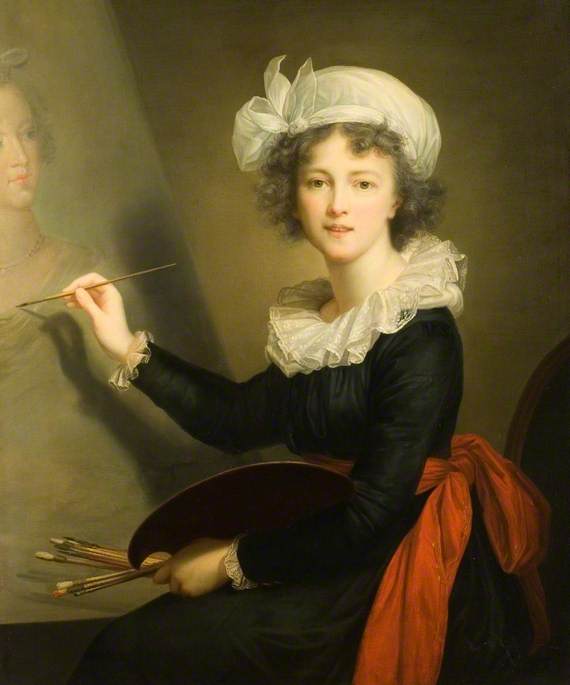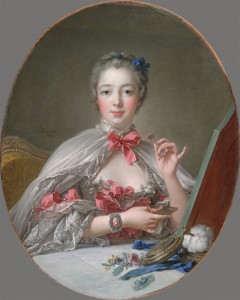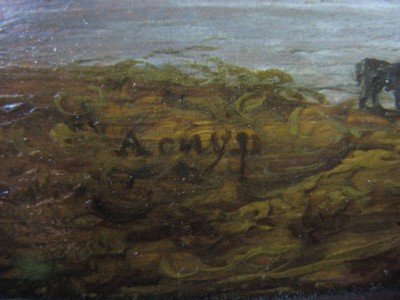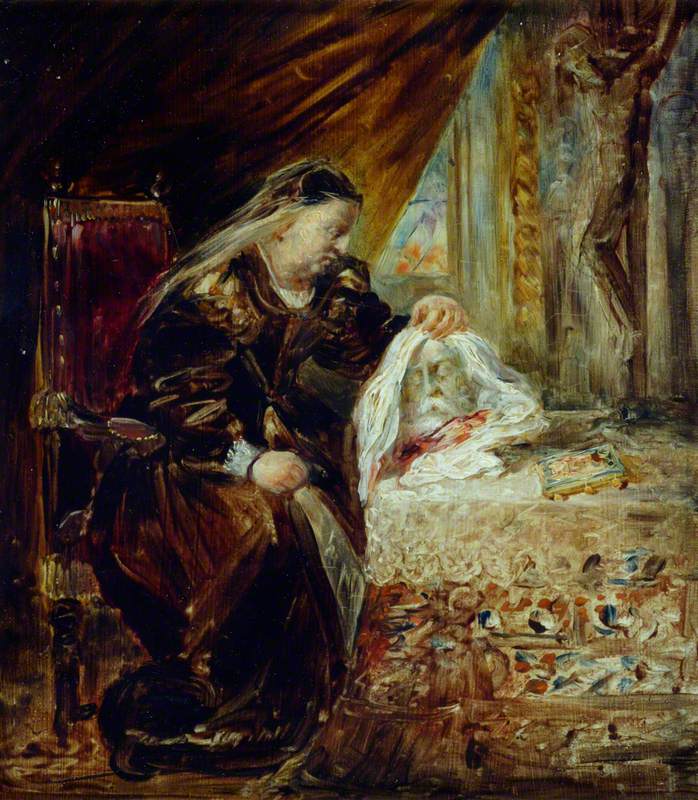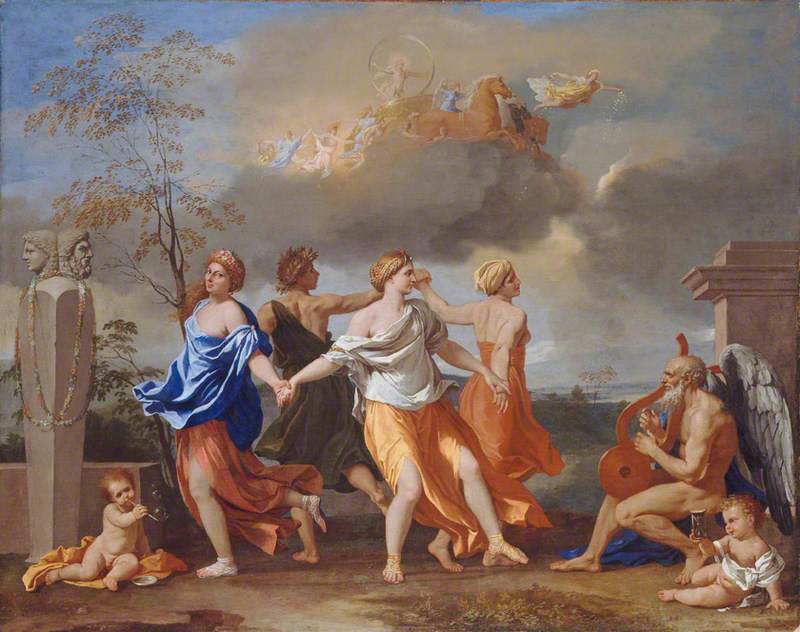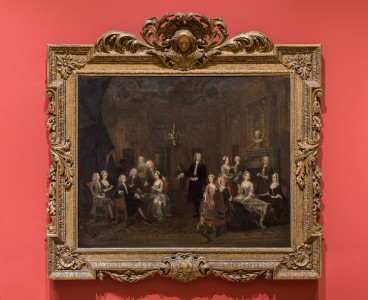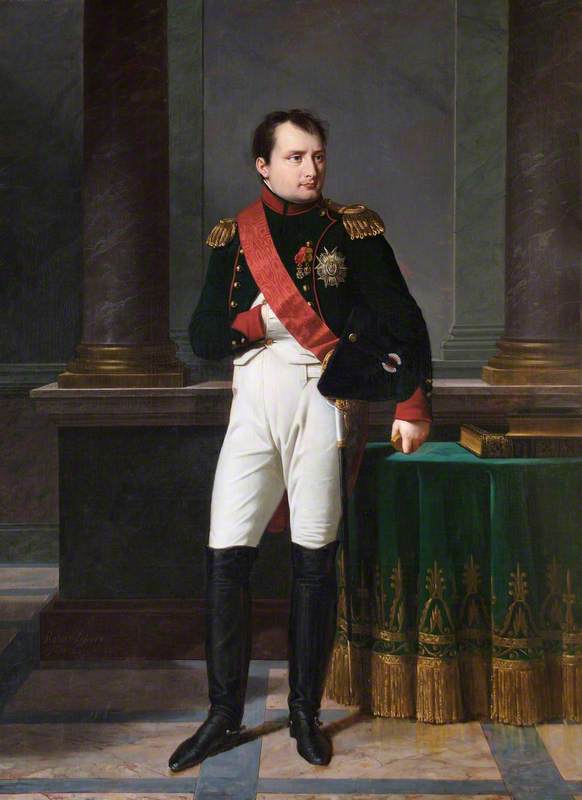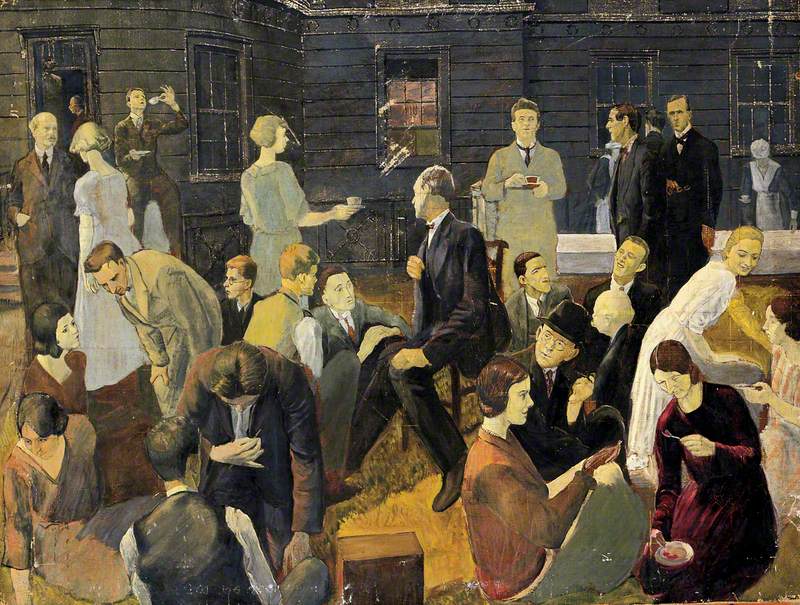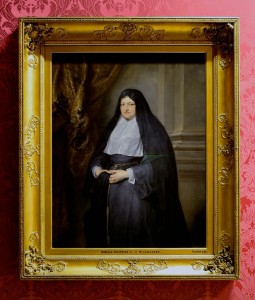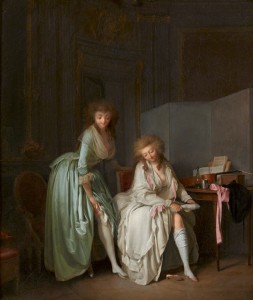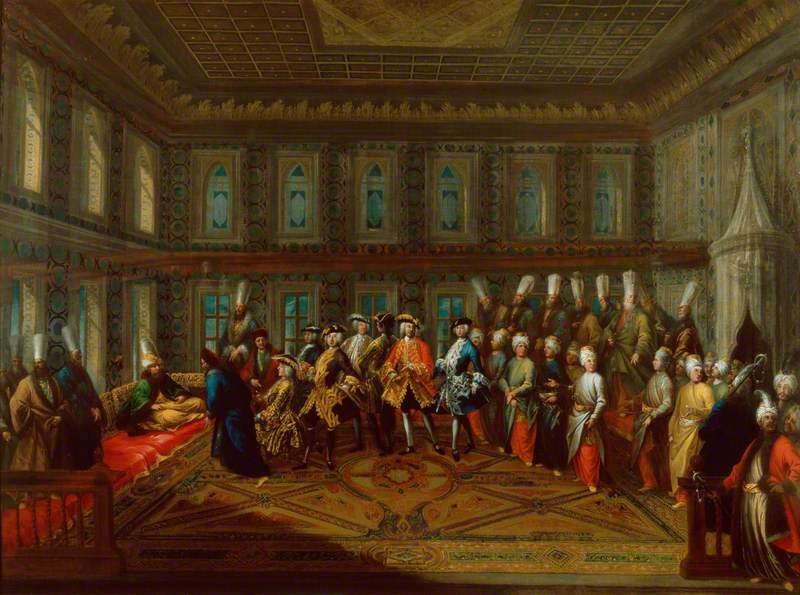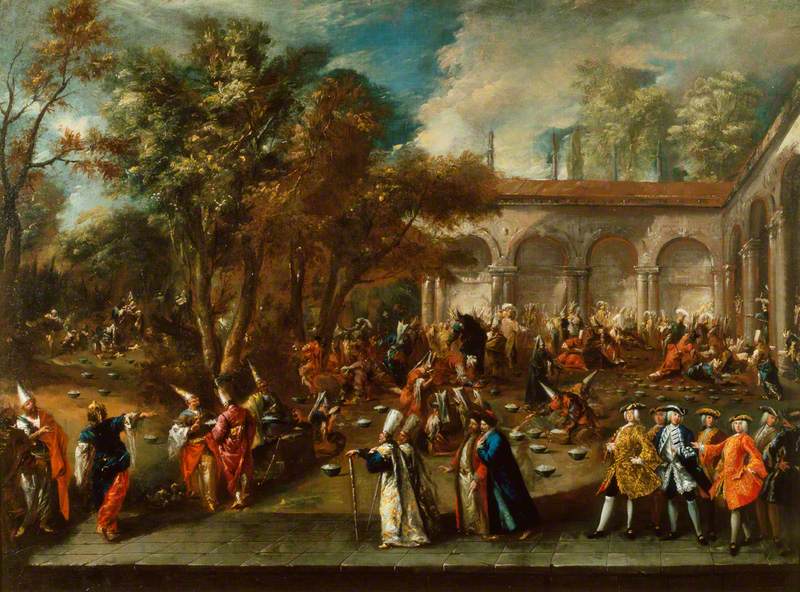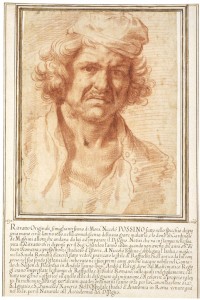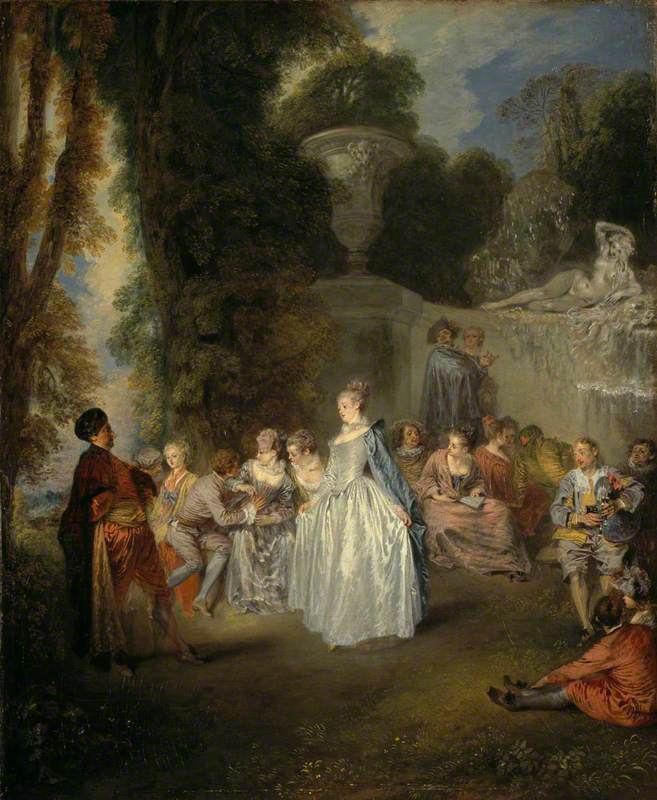A middle-aged woman pauses at her work on a swathe of luxurious gross point embroidery. She appears calm and assured, her right hand poised elegantly, her left lightly clasping an etui (a tiny, ornate box for needlework tools). Her unembellished face and simple lace cap are offset by a dazzling gown with a cascade of gold appliqué, and a frivolous lace bodice wound with pearls. The rich fabrics stand out superbly against the plain background, lending her presence and authority.
The Aved painting on display in Manchester Art Gallery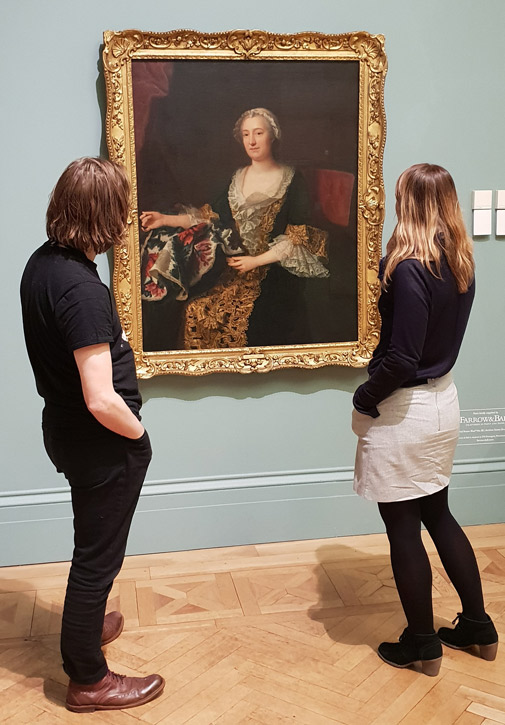
I became very fond of this quiet, intimate portrait while
History of the artwork
The gallery bought the painting from Shepherd Brothers of London in 1904 as a portrait of Mary Delany (1700–1788) by the prominent Scottish portraitist Allan Ramsay (1713–1784). Delany was an accomplished botanical artist, whose albums of floral collages are at the British Museum.
However, by the late 1930s, the attribution to Ramsay was in doubt, although there was less curiosity about the sitter. In February 1937, John Steepmann of the National Portrait Gallery told Manchester Art Gallery's director Lawrence Haward that probably the only way to find out who the sitter was would be to trace the history of the picture. That history is still a mystery.
Kenneth Clark, Baron Clark
1963–1964
Graham Vivian Sutherland (1903–1980) 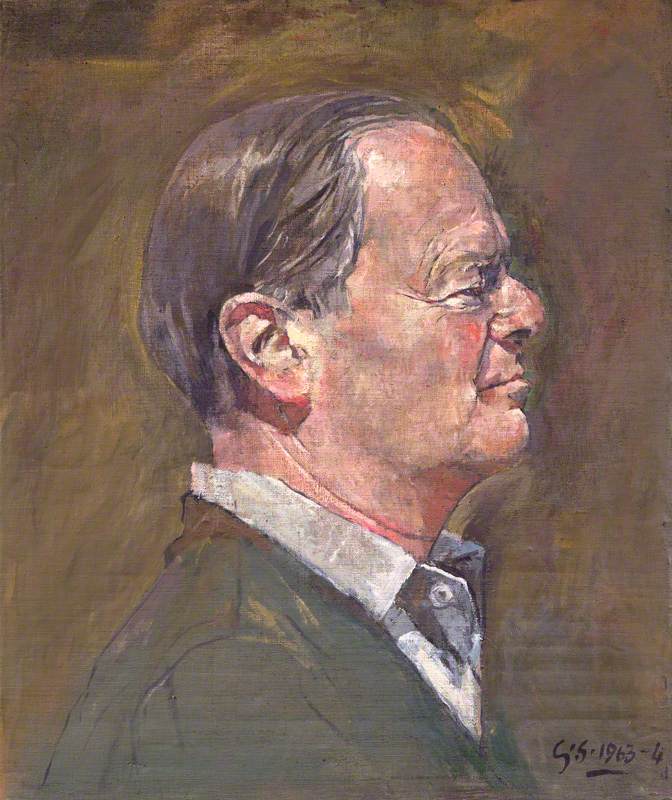
In June 1937, Kenneth Clark (Director of the National Gallery) wrote to Haward: ‘I wish I could say something... about the enclosed portrait, but alas I know nothing about it except that it is certainly French and perhaps by Du Plessis. In any
Then came the Second World War, and Manchester’s art collection was moved to storage off-site. In 1950, there was a resurgence of interest. David Baxandall, Director of the City Art Gallery, Manchester, from 1945–1952, consulted Francis Watson at The Wallace Collection. Watson’s first guess was Louis Tocqué (it is easy to see why), but a letter from Charles Maricheau Beaupré, Keeper of Paintings at Versailles, implied the long-awaited answer: ‘The portrait that you have sent me in reproduction is very beautiful, as far as one can judge from a photograph. To be more certain I would have to see the painting itself, but at first
Madame Crozat
1741, oil on canvas by Jacques-André-Joseph Aved (1702–1766) 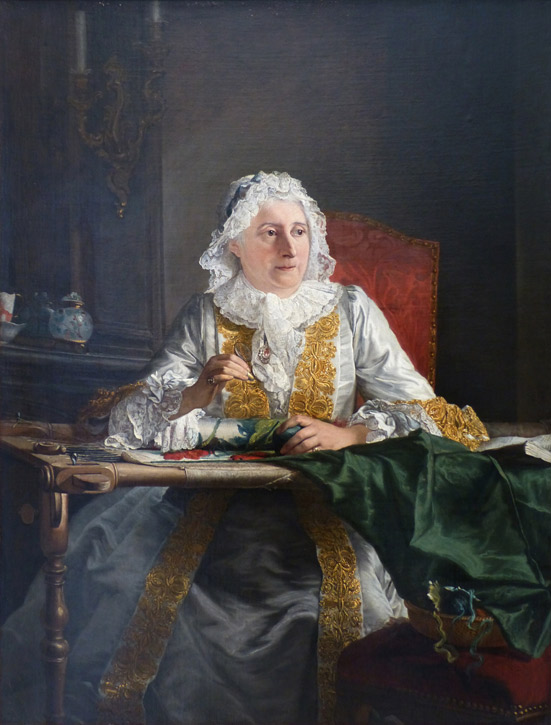
Madame Crozat, 1741 (shown here after the death of her husband, Antoine Crozat, one of France’s wealthiest merchants) is a well-known portrait by Jacques-André-Joseph Aved (1702–1766). Half of the mystery had been solved. That was in March 1950.
Who was
Jacques
Un Chimiste dans son laboratoire, dit Le Souffleur (portrait of Aved)
1734, oil on canvas by Jean-Baptiste Siméon Chardin (1699–1779) 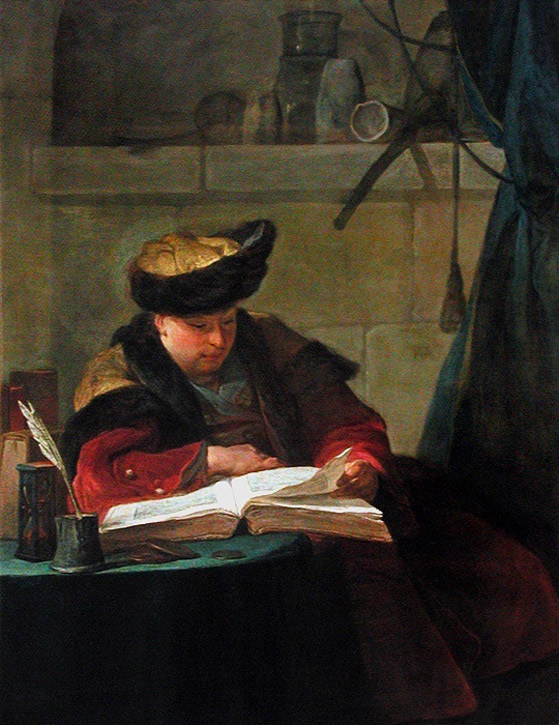
As well as
Who was the sitter?
I had wondered whether the sitter might be the painter’s wife (Anne-Charlotte Gaultier de Loizerolles). There was something relaxed and informal, almost intimate, about the picture, as if the artist knew her well.
Three years after leaving Manchester, on an unrelated library visit in 2018, I chanced on an article by Michelle Lespes concerning Aved’s close relationship with the Riqueti-Mirabeau, a notable family at the time.
Honoré Gabriel Mirabeau, from the series 'Collection des Grands Hommes'
1792, colour aquatint by Pierre Michel Alix (1762–1817) 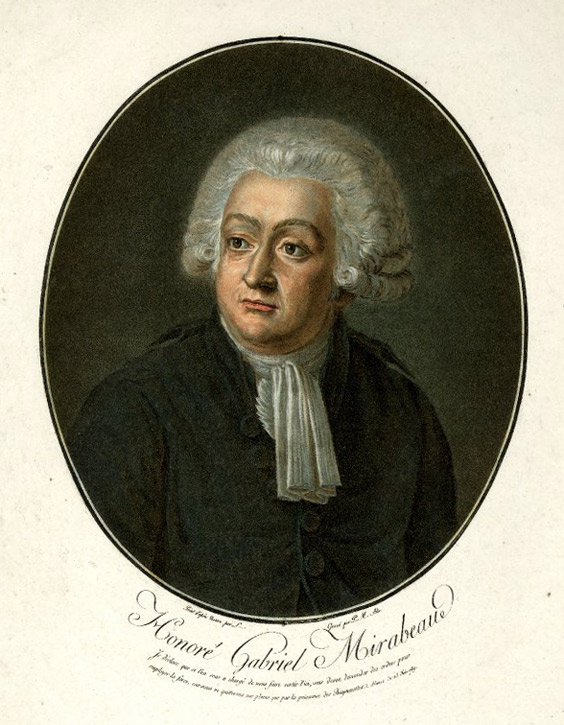
The Riqueti were Italian merchant traders in the sixteenth century. They purchased the chateau and seigneury of Mirabeau in Provence, and in 1685 Honoré Riqueti assumed the title of Marquis de Mirabeau. His son, Jean Antoine, married Françoise de Castellane Norante (1685–1769), who belonged to an ancient Provençal family. Their eldest son,
In
I have recounted the 100-year British history of this beautiful eighteenth-century French portrait with a sense of purpose. Possessing two other titles and apparently in the art store for most of its life since 1904, the chances of that portrait being reidentified were greatly diminished until the National Inventory Research Project ‘shone a light into the shadows’ (to echo Bendor Grosvenor, speaking of the related
There are hundreds of unidentified portraits on Art UK, among which there will be some important public figures and significant people. If you think you might be able to identify one of the many unknown sitters or artists, you can help by sending an
The Marquise de Castellane with Her Embroidery is – as far as we know – the only painting by Aved in a public collection in the UK. It will be on display at Manchester Art Gallery from now until later in 2019, replacing a painting by Thomas Gainsborough which is on loan to Compton Verney. Don't miss it!
Marion Richards, Art Detective Officer at Art UK
